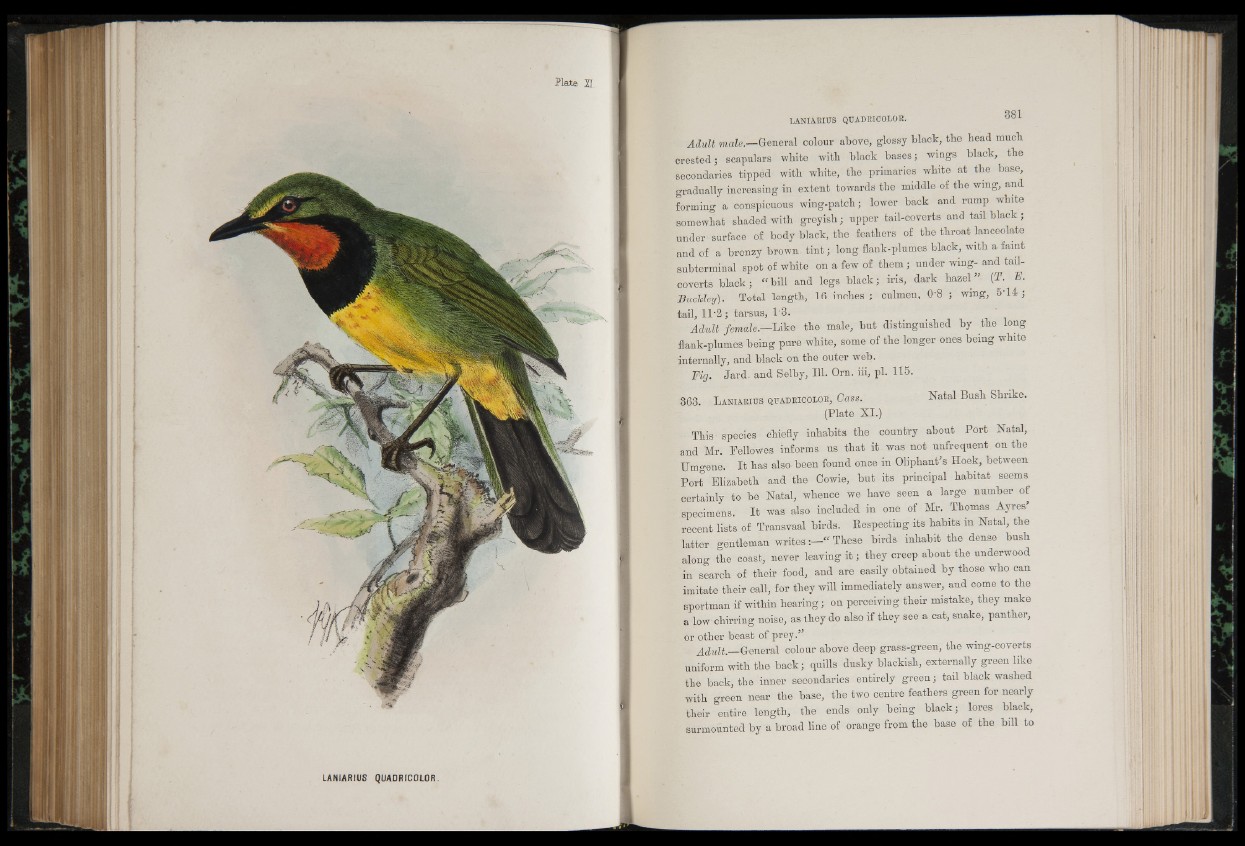
LANIARIUS QUADRICOLOR.
Adult male.—General colour above, glossy black, the bead much
crested; scapulars white with black bases; wings black, the
secondaries tipped with white, the primaries white at the base,
gradually increasing in extent towards the middle of the wing, and
forming a conspicuous wing-patch; lower back and rump white
somewhat shaded with greyish; upper tail-coverts and tail black ;
under surface of body black, the feathers of the throat lanceolate
and of a bronzy brown tint; long flank-plumes black, with a faint
subterminal spot of white on a few of them; under win g-^ and tail-
coverts black; “ bill and legs black; iris, dark hazel” (T. F.
Buckley). Total length, 16 inches ; culmen, 0-8 ; wing, 5T4 ;
tail, 1 1 '2 ; tarsus, 13.
Adult female.—Like the male, but distinguished by the long
flank-plumes being pure white, some of the longer ones being white
internally, and black on the outer web.
Fig. Jard. and Selby, 111. Orn. iii, pi. 115.
868. L a n ia r iu s q u a d r ic o l o r , Gass. Natal Bush Shrike.
(Plate XI.)
This species chiefly inhabits the country about Port Natal,
and Mr. Fellowes informs us that it was not unfrequent on the
Umgene. It has also-been found once in Oliphant’s Hoek, between
Port Elizabeth and the Cowie, but its principal habitat seems
- certainly to be Natal, whence we have seen a large number of
specimens. It was also included in one of Mr. Thomas Ayres’
recent lists of Transvaal birds. Respecting its habits in Natal, the
latter gentleman wr i t e s T h e s e birds inhabit the dense bush
along the coast, never leaving it; they creep about the underwood
in search of their food, and are easily obtained by those who can
imitate their call, for they will immediately answer, and come to the
sportman if within hearing; on perceiving their mistake, they make
a low-chirring noise, as they do also if they see a cat, snake, panther,
or other beast of prey.”
Adult.—General colour above deep grass-green, the wing-coverts
uniform with the back; quills dusky blackish, externally green like
the back, the inner secondaries entirely green; tail black washed
with green near the base, the two centre feathers green for nearly
their entire length, the ends only being black; lores black,
surmounted by a broad line of orange from the base of the bill to